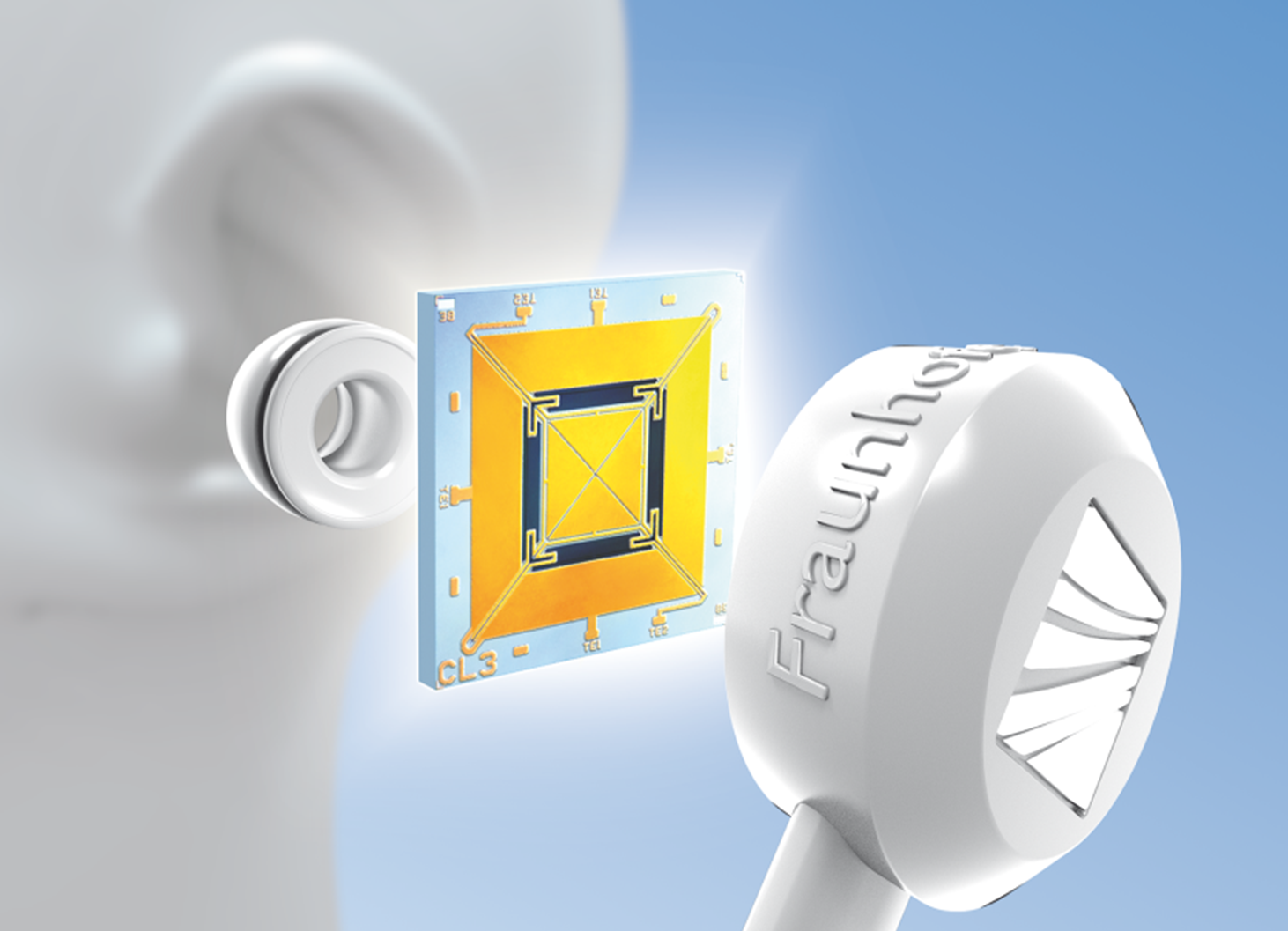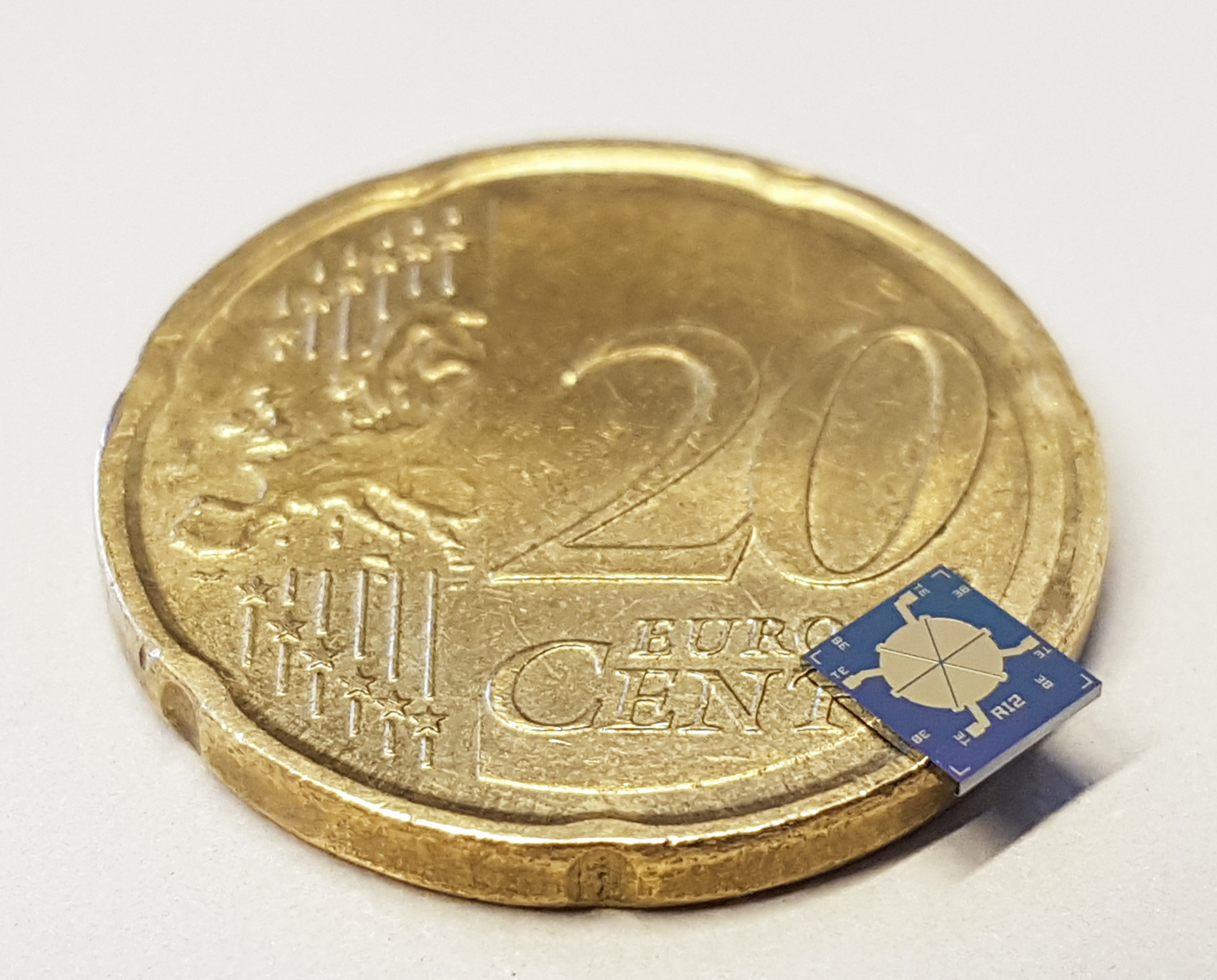Micro-loudspeakers based on MEMS chips offer high-fidelity at very low power consumption
Researchers from Fraunhofer ISIT and Fraunhofer IDMT have developed a novel type of micro-loudspeakers based on MEMS technology. At the Electronica 2018 trade show, Fraunhofer ISIT will demonstrate an in-ear headphone application to a broad industrial audience.


Embedded in an in-ear headphone, the so-called MEMS micro loudspeakers cover a frequency range from 20 Hz to over 20 kHz, generate a sound pressure level of 110 dB and deliver a balanced, powerful sound with brilliant treble tones. Compared to conventional loudspeakers, they feature a small size, low manufacturing costs and low energy consumption, which is particularly important for battery-powered mobile devices.
"Due to their excellent characteristics, MEMS loudspeakers can become the most important advancement in the field of miniature loudspeaker technology since many years," says Fabian Stoppel, head of the group Acoustic Systems and Microactuators at Fraunhofer ISIT. What is special in these tiny devices is the new MEMS-based driving technology. MEMS stands for micro-electro-mechanical systems: This is a special chip technology that can be used to combine miniaturized mechanical structures with electronic functions. The basic material for the new loudspeakers are silicon wafers, which allows to create structures measuring only a few thousandths of a millimetre by manufacturing processes that are also used in microchip technology.
ISIT’s new MEMS loudspeakers are based on the piezoelectric principle: Piezoelectric materials deform under electrical voltage, i.e. they convert electrical energy into motion. If an alternating voltage is applied to the actuator structure, which consists of a two micrometer (thousandths of a millimetre) thick piezoelectric layer and extremely thin silicon membranes, they begin to vibrate. These mechanical deflections displace the surrounding air and thus generate sound waves. Compared to electrodynamic drives, the piezoelectric driving principle is very efficient and thus enables loudspeakers with particularly low energy consumption.
The use of piezoelectric materials in technical applications was known for a long time. The novelty of the MEMS loudspeakers is that the piezoelectric materials are processed and structured using semiconductor technology during their fabrication. This allows the MEMS loudspeakers to be manufactured cost-effectively in large quantities on silicon wafers. The Fraunhofer ISIT conducts research in numerous application areas with different piezoelectric thin-film materials and has been an international leader in the field of piezoelectric MEMS for many years.
For three years, scientists at the Fraunhofer Institute for Silicon Technology, ISIT, and their colleagues at the Fraunhofer Institute for Digital Media Technology, IDMT, have been working on the joint development project. The ISIT researchers developed and manufactured the new micro loudspeakers, while their colleagues at the Fraunhofer IDMT provided the signal processing for the loudspeakers.
In spring 2018, the researchers from Itzehoe and Ilmenau achieved a breakthrough and were able to create powerful, integrated MEMS loudspeakers that they now aim to bring to market for in-ear applications.
Fabian Stoppel believes that MEMS loudspeakers have a great potential in the future, which also includes further applications such as smartphones, wearables, AR/VR and medical products. He and his development team are currently working on loudspeakers based on new piezoelectric high-performance materials that can further reduce power consumption. In addition, the researchers are developing loudspeakers with an even smaller size. This makes the loudspeakers even more attractive in terms of price and could establish completely new fields of application in acoustics.
The development of MEMS loudspeakers results from a long-term history of miniaturization in mobile electronics using silicon wafer technology. Well-known and widespread examples are tiny MEMS position sensors that quickly and reliably detect how a mobile phone or tablet is being held, or MEMS microphones that are now used in almost all smartphones.
 Fraunhofer Institute for Silicon Technology
Fraunhofer Institute for Silicon Technology